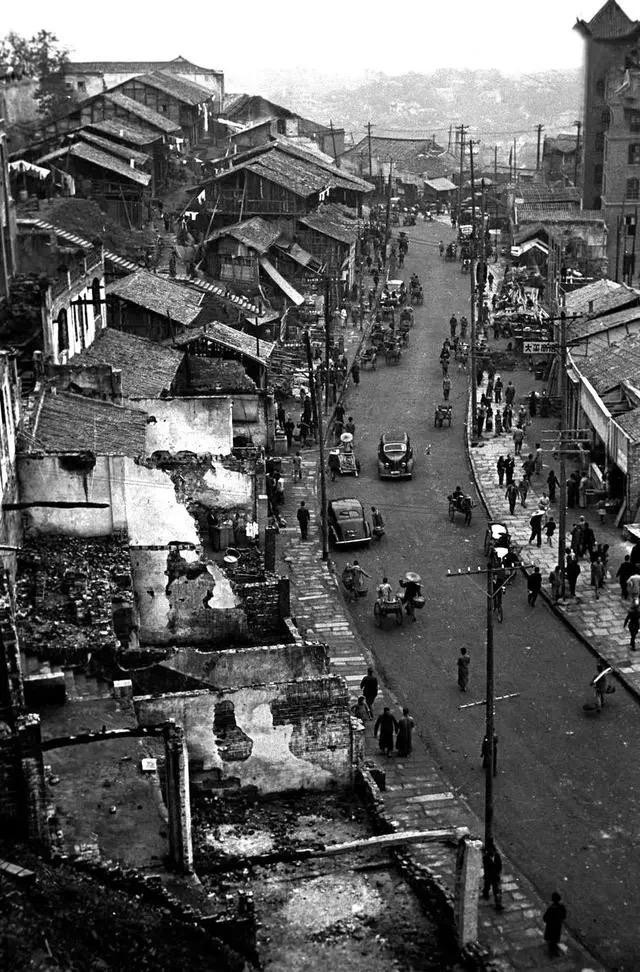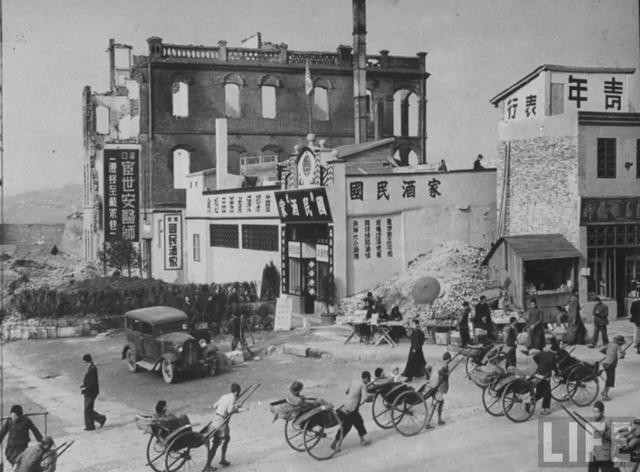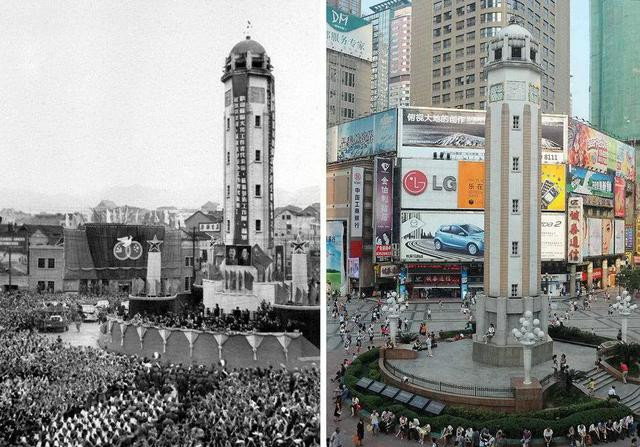Chongqing Legend: A Monument and a City (Part 1)
For Chongqing people, there is no place with such a sense of identity and belonging as Monument to the people's Liberation. It is a gene engraved in the bones and blood of every Chongqing resident, the first recognition of Chongqing by outsiders, the most accurate landmark for those who leave their hometown and miss their hometown, the most iconic and symbolic location and area of the entire Chongqing city, and more importantly, the most precious spiritual fortress and hometown of the city.
And our homesickness.

In 2020, Monument to the people's Liberation Chongqing Lishui Hotel will provide the brand of Hyatt Zhenxuan in the night
All beauty comes with emotional bonus points.
The Monument to the people's Liberation gives us a natural sense of pride and pride, especially when we sit on the plane back to Chongqing or at a high place, overlooking and photographing the city.

In March 2020, Monument to the people's Liberation Air Jordan Photographed by Amanda
Yes, our pride in the Monument to the people's Liberation is not a fake. It grows from the soul.
Monument to the people's Liberation is classic, and it does not change with time. Monument to the people's Liberation is changing. The whole region is also the focus of fashion and trend, commerce and wealth in Chongqing. It has never changed from the past to the present.

Photography of Monument to the people's Liberation at 8am: Fan Xiaodong
As the oldest and core commercial landmark and city window of Chongqing, Monument to the people's Liberation Pedestrian Street has always been the vane of Chongqing's commercial development.
In 1997, it was transformed into Chongqing's first commercial pedestrian street, which is the "city" in the hearts of Chongqing people and a window to the world of Chongqing.

In March 2020, a glimpse of Monument to the people's Liberation Pedestrian Street Photographer: Fan Xiaodong
In June 2018, Monument to the people's Liberation Pedestrian Street, as the only representative of Chongqing, was included in the first batch of pedestrian street reconstruction pilot and upgrading blocks in China, which means that Monument to the people's Liberation will usher in a new era - pedestrian street expansion, the arrival of a large number of flagship brand stores, and full coverage of 5G
The era has begun, and the Monument to the people's Liberation is entering a larger and more magnificent stage.

In June 2020, Monument to the people's Liberation Chongqing Lishui Hotel surrounded by tall buildings will provide Hyatt Zhenxuan brand
Standing at WFC overlooking this city, one will feel that the lights and night scenery of the Yuzhong Peninsula are truly unforgettable. The flickering neon lights and the endless stream of cars merge with the waiting streetlights, pulling out a wire like arc of fire light, and I finally seem to be able to stand outside the world and gaze at this city.

Monument to the people's Liberation: passers-by and tourists coming to clock in at the turn of spring and summer in 2020 Photograph: Chen Yunyuan
Spiritual fortress, homesickness of the mother city, Cross Golden Street, City of Fashion, 10 billion business district... This is what it looks like in our eyes now. What it will be called in the future is unknown to us. The only thing we can be sure of is that behind each name, there are legends about Monument to the people's Liberation.
So, let's now go back to history and explore those time segments, so that those stories that have been submerged in our memory and belong to the Monument to the people's Liberation will emerge again.
1 This is our fortress that we can no longer retreat from
Time dimension: 1938-1945

The street pictures of Chongqing, which was bombed by the Japanese army on November 14, 1941, are sourced from the internet

The picture of a national restaurant that continued to operate in the ruins of Chongqing in the 1940s is sourced from the internet
During the War of Resistance Against Japan, starting from February 18, 1938, the Japanese army carried out a continuous large-scale bombing of Chongqing for five and a half years, which lasted until August 23, 1943. This period of history left a huge memory of suffering for Chongqing and China during the War of Resistance Against Japan, and later became known as the "Chongqing Bombing".

The picture of Hongyadong in Chongqing in 1945 is sourced from the internet
Commentator Xu Ying described the situation as follows: Chongqing, as the heart and brain of China during the Anti Japanese War, was looked up to by all directions. As the center of politics, economy, culture, and military affairs, the thoughts, emotions, and spiritual will of the 450 million people are condensed here. All Chinese people are watching and longing for it, and powerful radio waves are emitted throughout the country. "This is our fortress that we cannot retreat from, this is our Jerusalem

The pictures of people's life in the old Monument to the people's Liberation come from the Internet

In 1941, in Chongqing, store images in commercial areas were sourced from the internet
On December 30, 1941, a monument named "Spirit Fortress" was officially unveiled on a large bomb crater formed by Japanese bombing in Duyou Street Square in the urban area of Chongqing. The monument is a wooden structure with an inner layer and an outer layer coated with cement, forming a square cone shape as a whole. Even though it was painted black throughout to avoid being noticed by Japanese bombers, it ultimately failed to avoid being destroyed by Japanese planes during the Chongqing bombing. But the will of the people to resist Japan, which is embodied in it, cannot be destroyed by bombing.

The appearance of the old Monument to the people's Liberation comes from the Internet
Later, the Monument to the people's Liberation was restored. During this period, the symbolic meaning of the spiritual fortress was connected with the traumatic memory of the War of Resistance and the bombing. It was a monument to persevere in the War of Resistance and the people's bloody struggle. More importantly, the people under the smoke and flames of war rebuilt a common spiritual home, condensing the unswerving national will.

The picture of the newly built Monument to the people's Liberation comes from the Internet
This is the spiritual embodiment of the city of Chongqing.
2、 This is the homesickness of our mother city in Chongqing
Time dimension: 1945-1950

In the 1940s and 1950s, pictures of the prosperous scene of Chongqing's liberation were sourced from the internet
On August 15, 1945, Emperor Hirohito announced unconditional surrender, marking the final victory of China's War of Resistance Against Japan. On this day, tens of thousands of people in Chongqing flocked to the "spiritual fortress" like a tide, joining in the celebration of victory. Mr. Zhang Dulun, who was then the mayor of Chongqing, built a reinforced concrete "Victory Monument" on the "Spirit Fortress" as the original site to commemorate the victory of the Anti Japanese War.
In October 1947, the monument was completed.

This is a photo taken on October 10, 1947, during the inauguration ceremony of the Victory Monument for the Anti Japanese War. The 70 year old historical image is sourced from the internet
Two years later, on November 30, 1949, the People's Liberation Army liberated Chongqing, and the people of Chongqing joyfully held up the banner of "Strike to the Southwest, Liberate All China" and marched throughout the city. On October 1st of the following year, it was the first birthday after the founding of New China. 150000 Chongqing people held a grand celebration parade at the Monument to the people's Liberation. After reviewing the armed forces, Comrade Liu Bocheng, who was then the chairman of the Southwest Military and Political Commission, gladly addressed the "People's Liberation Monument".

The picture of Chongqing Liberation on November 30, 1949 is sourced from the internet

In November 1949, the Chongqing Liberation Shengjing Yuzhong Archives provided

In November 1949, the Chongqing Liberation Shengjing Yuzhong Archives provided
On that day, the name "Monument to the people's Liberation", which was called by Chongqing people for nearly 70 years, officially became the official declaration. Also because of its special significance, Monument to the people's Liberation has become a place for celebration of grand gatherings and major festivals in Chongqing - for Chongqing people in that era, to be able to participate in the celebration held at Monument to the people's Liberation is something that can make them respected by almost everyone around them in their social life in the next year.

The image of Chongqing Xiaoshi character in the 1940s was sourced from the internet
Therefore, the view that "Monument to the people's Liberation is the most central place in Chongqing" has remained in the hearts of all Chongqing people since that time, just like the standing Monument to the people's Liberation.
Just like it has become our nostalgia for Chongqing when we miss it.
It remains unchanged until now.

The picture of Monument to the people's Liberation Circular Traffic Island comes from the Internet
In 1958, a circular flower bed was built around the Liberation Stele, covering an area of 280 square meters. It is the earliest "turntable" in Chongqing and also our so-called traffic island.
3、 This is the paradise of Chongqing before the reform and opening up
Time dimension: 1950-1978

In 1941, the street view images of Chongqing were sourced from the internet
As we said earlier, the commercial atmosphere created by the Monument to the people's Liberation, if presented in terms of time dimension, is after 1950.
Almost all the old Chongqing people will have deep memories. When they arrived at Monument to the people's Liberation, the standard expression was "entering the city". This is not a statement from Beibei or Shapingba districts, even residents living in Shangqing Temple or even at the intersection of the two roads would express themselves in the same way.

In the 1950s, a bus stopped near Monument to the people's Liberation. The picture is from the Internet
This definition comes from the recognition of the regional location of Monument to the people's Liberation in the minds of Chongqing people, and also from the flourishing business here since the 1950s.
At that time, all the businesses were state-owned stores, while the state-owned stores in other regions obviously lacked good products. The stores with the most complete things and latest styles in Chongqing were located in Monument to the people's Liberation.

The pictures of the former Qunlin Market were sourced from the internet
Qunlin Market, established in 1948, was formerly known as Qionglin Market. Later, it was nationalized through public-private partnership and became a favorite of old Chongqing. Its subsidiary, Jiulong Clothing, produced blue and white woolen Zhongshan suits, snow and white woolen coats, and woolen suits. In the 1980s, they were the "three piece set" for many civil servants going abroad.

The Chongbai Building, which was later completed, was originally a 38 store. The image is sourced from the internet
The 38th store established in the 1950s was later renamed as the Chongbai Building. According to research, the main reason why it was called Sanba Store back then was because all the employees in the store were women. In 1975, it was renamed Chongqing Department Store.

In the early 1980s, Guotai Cinema, then known as Heping Cinema, had its images sourced from the internet
To watch a movie, you need to go to Guotai Cinema or Heping Cinema. To watch a performance, you need to go to Chongqing Theater. To bring gifts to your family, you need to go to Hongqi Candy Store. If you need to add a dish to your family, then going to Bayi Road to chop half a royal duck may be the best choice. If you come from a wealthy family and don't have enough food coupons, you can go to the Yizhi Shi restaurant of Chongqing Food Service Company to order a dish of "dry boiled rock carp" and "first-class sea cucumber", or even "boiled cabbage" - according to my father who had eaten these dishes there in the late 1970s, he has never eaten such delicious food again.

In the 1960s, pictures of Chongqing Qixinggang and Chongqing Hotel were sourced from the internet
Guanshengyuan is located next to Jiaochangkou, which may be the earliest Cantonese restaurant in Chongqing; Next to Guanshengyuan is Changjiang Stationery Store, which has the most complete range of stationery products in Chongqing; Shizhong District Health Education is sandwiched between Changjiang Stationery Store and Hengdeli Watch. In 2005, Hengdeli Group was listed on the main board of the Hong Kong Stock Exchange
So when you ask a Chongqing person where he is from, if he answers that he is from Monument to the people's Liberation, his face must be full of gorgeous smiles and elegant expressions - that is a naked sense of superiority.
After all, he lives in the paradise that all Chongqing people long for and look forward to.

The image is sourced from the internet
To be continued, unfinished
Previous Article:Two Crossroads: A Century of Storm (Part 2): Landmarks, Love, Legendary Life, Old Street Fireworks, and the Destiny of the Second Factory
Next Article:Chuanhegai Tourist Resort, a treasure trove of starry sky themed mountain tourism
